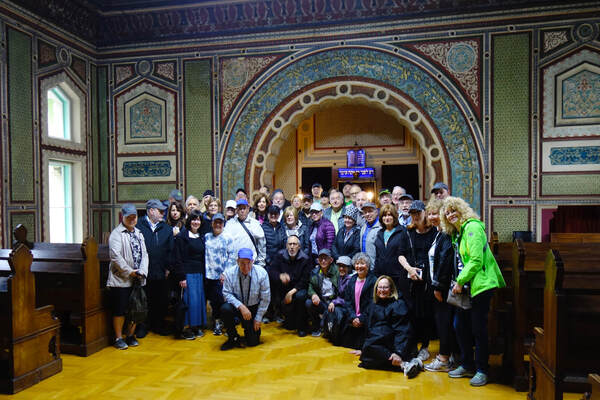Shabbat Candle Lighting Times for Sarajevo
Sarajevo, the 300 000 inhabitants strong capital of Bosnia and Herzegovina, came under the spotlight twice in the 20th century. The first occasion was the assasiantion of Archduke Franz Ferdinand and his wife Sophie on June 28, 1914, the very trigger of the Great War. The second one was the destruction of the city endured during the recent Wars of Yugoslav Succession in the 90’s.

But in recent years, Sarajevo’s been rediscovered for all the good reasons as the mesmerizing meeting point in the heart of Europe between the Orient and the Occident.
Nestled within the greater Sarajevo valley of Bosnia, it is surrounded by the Dinaric Alps and situated along the Miljacka River in the heart of the Balkans. This geographic position together with the long legacy of inter-religious tolerance and coexistence justifies it being called the “Jerusalem of Europe”. It is one of only a few major European cities to have a mosque, Catholic church, Orthodox church and a synagogue within the same neighborhood. The modern city of Sarajevo arose as an Ottoman stronghold in the 15th century, overtaken later by the Habsburgs and brought under the rule of the Kingdom of Yugoslavia after WWI, followed by Socialist Republic of Yugoslavia after WWII.
In 1984. it hosted the Winter Olympics, marking the peak of Sarajevo’s “golden age”. Unfortunately, during the Wars of Yugoslav succession in the 90’s, the city suffered the longest siege of a capital city in the history of modern warfare (1,145 days). Luckily, Sarajevo is now rapidly developing and, in no small measure due to the internationally acclaimed Sarajevo Film Festival, becoming a magnet for travelers from all over the world. The city’s core, marked by strong Ottoman presence and its world-renowned architectural talents, teleports quickly into the world of cobblestones, Turkish coffee and enchanting spices from the Middle East. The Baščaršija street, Sarajevo’s historical and cultural kernel is a real touring beehive and a travel magnet in its own right.
The Jewish history of the city is no less fascinating and we are always delighted to be guided by the local members of the community as they tell their story via the Museum of the Jews of Bosnia and Herzegovina, situated in the oldest synagogue in Bosnia and Herzegovina, built in 1581. The first Jews arrived in Bosnia and Herzegovina in the period from 1492 to 1497 from Spain and Portugal, fleeing the Spanish and Portuguese Inquisitions, welcomed by Sultan Bayezid II of the Ottoman Empire. In almost unprecedented continuity, the Jews remained and flourished in Sarajevo, to this day, contributing generously to the city’s cultural and economic life.
The famous Sarajevo Haggadah reflects this history and stands as a living monument of its significance. Historians believe that it was taken out of Spain by Spanish Jews who were expelled by the Alhambra Decree in 1492., only to resurface in Italy in the 16th and was finally sold to the National Museum in Sarajevo in 1894 by a man named Joseph Kohen. During WWII it was saved by the Museum’s chief librarian, Derviš Korkut, who risked his life doing so. It is one of the most luxurious illuminated manuscripts in existence and a marvel to behold.
The Jewish community today numbers around 700 members. The center of Jewish life in Sarajevo is the neo-Moorish Ashkenazi Synagogue, which was built in 1902. It also houses the Jewish Community Center in an adjacent area, which was originally built in 1927. for administration and other communal services. The community is not particularly religious, but a rabbi comes in from Israel when needed. They do, in fact, hold Friday night services with a hazan, and also celebrate all the Jewish holidays but the kosher food is still not available in Sarajevo.
Jewish Sarajevo Info
Jewish community Sarajevo
Hamdije Kresevljakovica 59, 71000 Sarajevo, Bosnia and Herzegovina
Phone: +387 33 229 666 / +387 33 229 667
Web: La Benevolencija
